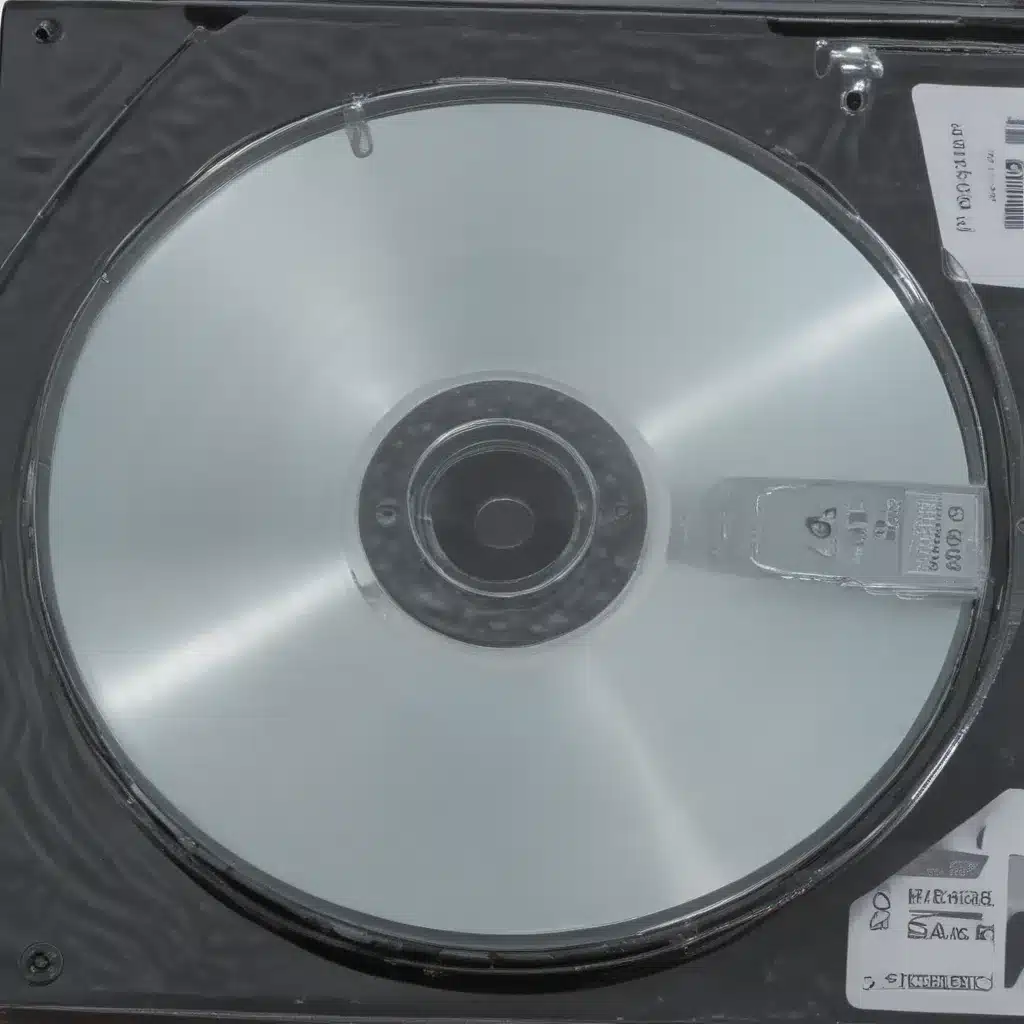The Scratchy Situation
Ah, the humble CD – those shiny discs that used to be the go-to storage solution for our precious digital files. But alas, like the floppy disk before it, the CD has fallen victim to the ravages of time and technology. Scratches, scuffs, and the dreaded “disc read error” have become all too common, leaving many of us wondering: is there any hope for recovering data from these damaged discs?
Well, friends, I’m here to tell you that the answer is a resounding… maybe. You see, while CDs may be more fragile than their modern counterparts, there are still some tricks up our sleeves when it comes to salvaging that valuable data. So, grab a magnifying glass and a stiff upper lip, because we’re about to embark on a journey into the world of CD recovery. [1]
The Scratchy Struggle
The first hurdle we’ll need to overcome is the fact that normal file copying mechanisms simply won’t cut it when it comes to damaged discs. As the kind folks over at r/computerforensics put it, “normal file copying mechanisms will not attempt to read from a bad sector or unreadable data. Instead, they will freeze, or throw an error upon encountering such data.” [1]
In other words, trying to drag and drop your files from a scratched CD is like trying to herd cats – it’s just not going to work. But fear not, for there are specialized tools out there that are designed to tackle this very problem.
The Scratchy Solutions
Three of the most popular options are ddrescue, dvdisaster, and testdisk. These handy-dandy applications can create an “exact image file (or something that resembles it)” from your damaged disc, allowing you to then carve out the readable data using a tool like photorec. [1]
Now, I’ll be honest with you – the process of reading from a damaged disc using these tools can be a real time-saver. I’m talking about a 700MB CD taking around 12 hours to complete. But, as they say, good things come to those who wait, and the ability to pause and resume the process at any time is a real lifesaver. [1]
The Scratchy Saga
So, let’s dive into the nitty-gritty of how these tools work, shall we? First up, we’ve got dvdisaster, a nifty GUI application that makes the whole process a breeze. Simply select your CD/DVD drive, choose a location to save the output file, and click “start reading.” Easy peasy, lemon squeezy. [1]
Now, if you’re the type who likes to get their hands a little dirtier, ddrescue might be more your speed. This command-line tool gives you the ability to fine-tune the reading process, including the ability to skip over the bad sectors and then go back and try to recover data from them. It’s a bit more involved, but the potential payoff is well worth it. [1]
And last but not least, we’ve got testdisk, a jack-of-all-trades tool that can not only create disc images but also help repair corrupted filesystems. The beauty of testdisk is that it’s lightning fast compared to the other options, so if you’re in a hurry, this might be the way to go. [1]
The Scratchy Salvation
Now, once you’ve got your disc image file, it’s time to turn to photorec, a data carving tool that can help you extract those precious files from the wreckage. Just point it at your image file, let it work its magic, and voila – you’ll have a directory filled with (hopefully) recoverable data. [1]
Now, I won’t sugarcoat it – the recovery rate isn’t going to be 100%, and you may end up with some files that are only partially recovered or even split into multiple pieces. But hey, it’s better than nothing, right? And who knows, with a little elbow grease and some physical disc polishing, you might just be able to eke out even more data. [1]
The Scratchy Satisfaction
So, there you have it, folks – the scratchy saga of CD data recovery. It may not be the prettiest process, and it may require a bit of patience and persistence, but with the right tools and a bit of know-how, it is indeed possible to recover data from those pesky scratched discs. [1-8]
And who knows, maybe one day we’ll look back on these CDs the same way we do on those floppy disks – as relics of a bygone era, but with a newfound appreciation for the ingenuity and determination it took to keep them alive. Until then, keep that magnifying glass handy, and happy recovering!













